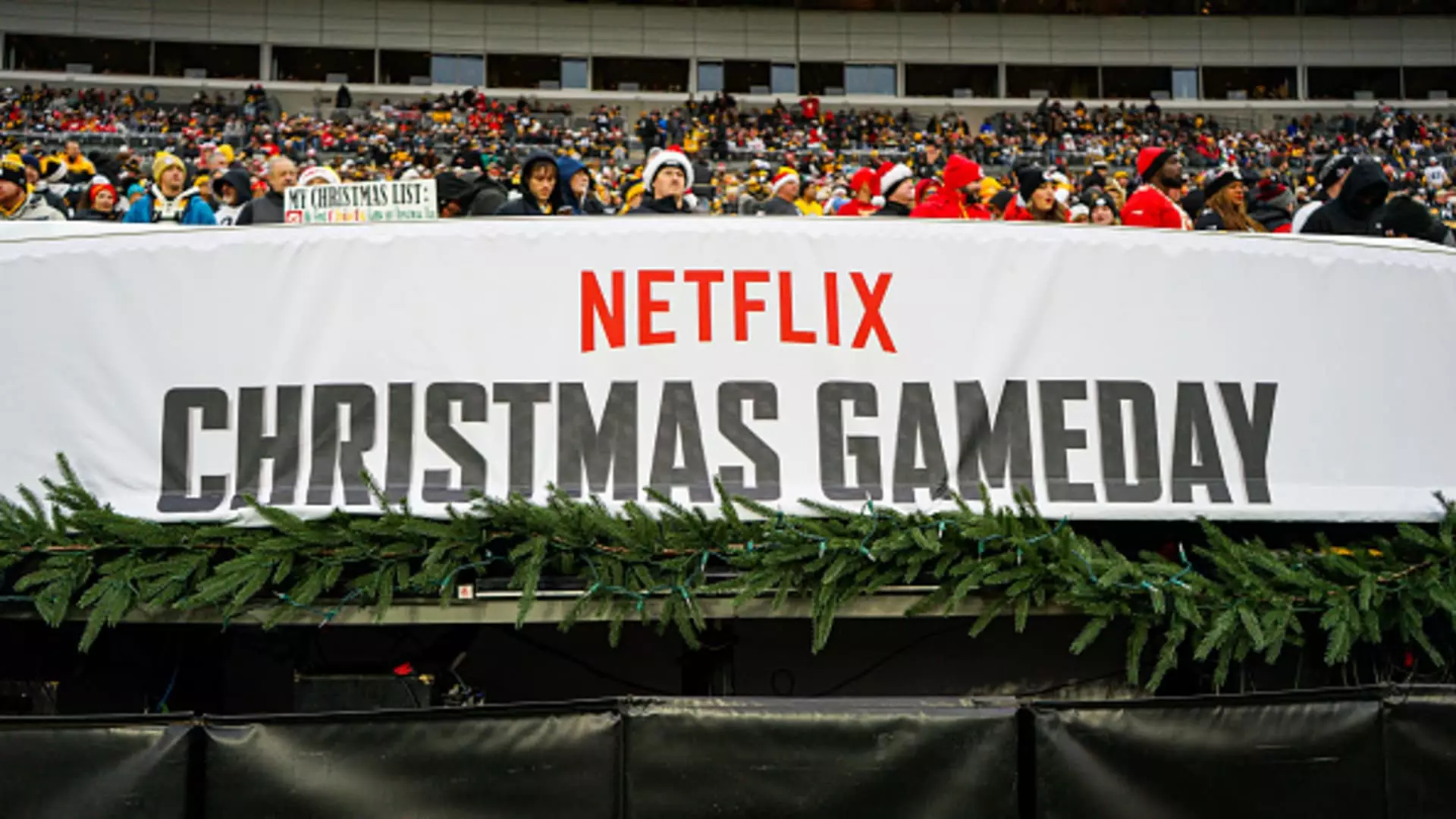The holiday season of 2023 marked a remarkable shift in sports broadcasting, primarily due to Netflix’s entry into the live sports arena. On Christmas Day, the streaming giant secured exclusive rights to air two NFL games, resulting in viewership numbers that shattered previous records. According to Nielsen, approximately 65 million viewers across the United States tuned into these matchups, emphasizing Netflix’s successful foray into the sports domain. The Baltimore Ravens’ game against the Houston Texans attracted an average of 24.3 million viewers, while the Kansas City Chiefs faced the Pittsburgh Steelers with a close average of 24.1 million viewers. Notably, the Ravens vs. Texans game hit a peak during Beyoncé’s much-anticipated halftime performance, drawing in over 27 million spectators, showcasing the undeniable allure of high-profile entertainment married with sports.
This monumental achievement didn’t go unnoticed by Netflix’s executives. Bela Bajaria, the Chief Content Officer, conveyed their excitement in a press release, stating that delivering such a record-breaking day of entertainment served as a “best Christmas gift” for their members. This underscored their strategic partnership with the NFL, which is set for three years of exclusive Christmas matchups, indicating a significant shift in live sports broadcasting strategies.
While Netflix was busy celebrating its success, the NBA also saw an uptick in its Christmas Day viewership, although the numbers were comparatively modest. The league experienced its most-watched Christmas in five years, with an average of 5.25 million viewers per game across five live telecasts. The Los Angeles Lakers’ victory over the Golden State Warriors captured significant attention, averaging 7.76 million viewers, peaking at 8.32 million. Similarly, the day began strong with the New York Knicks versus the San Antonio Spurs game, which garnered 4.91 million viewers, marking the highest figures for a Christmas Day opener in over a decade.
These figures translate to a staggering 84% increase in viewership year-over-year, reflecting a renewed interest in the NBA’s Christmas schedule. Broadcasted across a multitude of Disney platforms—ABC, ESPN, ESPN2, Disney+, and ESPN+—the robust ratings provided a much-needed boost for the league, which has been grappling with declining viewership issues throughout the season.
What do these developments mean for the future of sports broadcasting? Netflix’s success indicates a growing trend of streamers exerting influence over traditional broadcasting paradigms. As consumer habits continue to shift towards on-demand content, the integration of high-profile sports events within a streaming format is likely to become more prevalent. This transition not only broadens the audience base but also introduces a blend of entertainment that resonates with viewers who thrive on both sports and celebrity culture.
As both the NFL and NBA leverage these partnerships to attract broader audiences, they highlight the necessity of adapting to viewers’ demands for flexibility and accessibility. This evolving landscape raises essential questions about the traditional television viewing experience, potentially transforming how fans engage with their favorite sports during marquee events, particularly during the festive season. Ultimately, as both leagues strive to reshape the viewing experience, their endeavors could redefine the future of sports entertainment as we know it.

